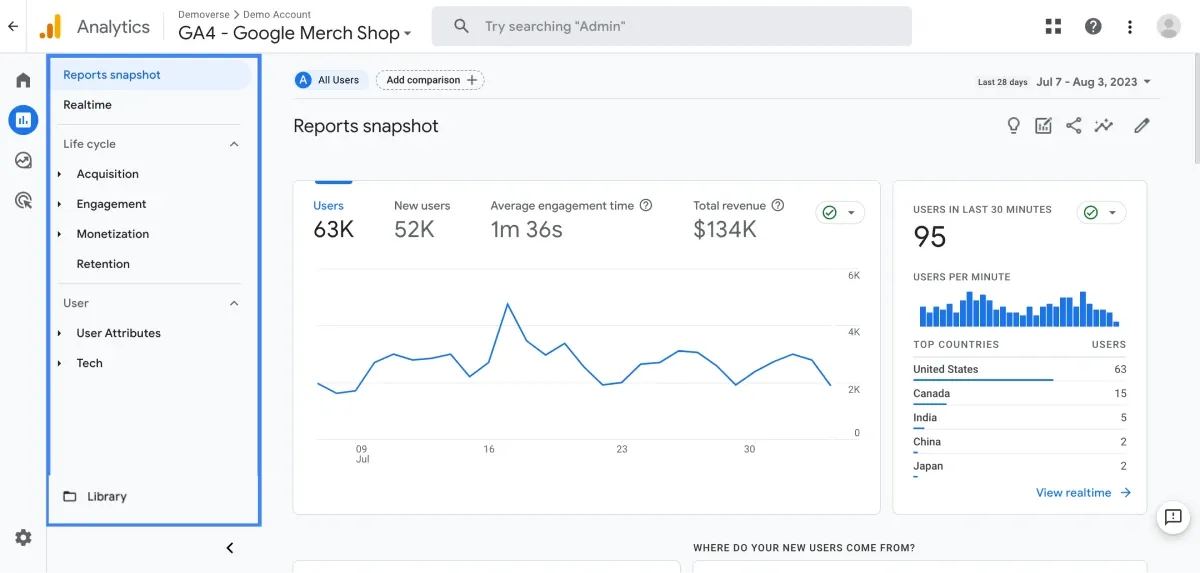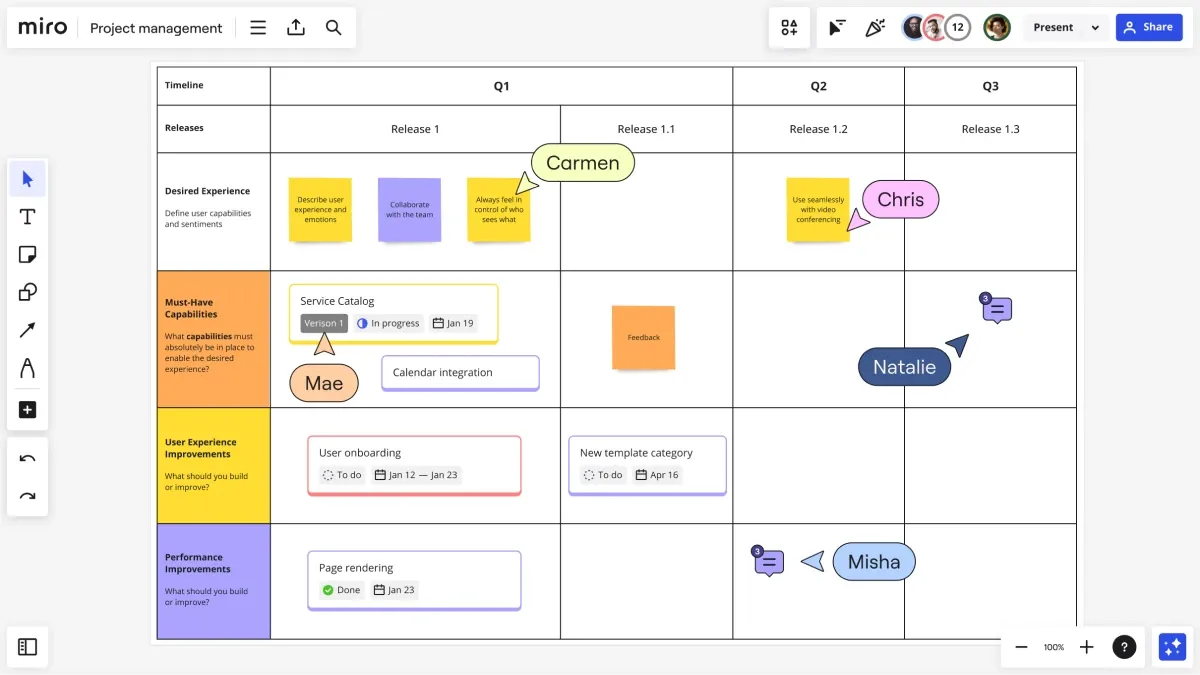We talk a lot about customer experience on this blog. I've covered it in a variety of ways, shapes, and forms over the past couple of months. But understanding customer experience and how to optimize it is only as useful as the tools that you have at your disposal. That's because even simple and straightforward products that have clean UX often require a lot of behind-the-scenes work and optimization. There are so many tools in each category as well, making it difficult to determine what's the best fit for your product.
These customer experience tools help you automate and optimize these processes and remove intuition and guessing from your product design. They help you better understand what users like and dislike about your product, visually map out and structure your user flows, gather data and improve your decision-making, and generally engage and support your users throughout their journey.
I want to start by talking about the core categories of customer experience tools and what you should look for within each category, and then we can dive into a review of some of my favorite tools tools, and then dive into where CX and its tools are heading (ahem, AI, no surprise there!)
The different types of customer experience tools
Customer experience tools, when defined broadly, can encompass many different SaaS products, but you can usually break it down into five core categories.
User journey mapping
Understanding your user journey is critical to the development of a great product in the first place. That's why so many product managers and designers use a customer journey map, which documents the user's flow through your entire product, as a cornerstone of product design. It can be useful to map this out as it forces you to define and delineate the different paths users can take throughout different workflows within your product. This can help you identify pain points or friction, things that don't make sense, and generally just ensure that your entire team is aligned.
Customer feedback collection tool
Customer feedback is essential to an improved and ongoing understanding of your users' needs, wants, and desires. Tools that help you survey users, gather feedback, and generally gauge your product's usability, satisfaction, and ease of use can help you understand what your users are actually thinking. Within this category, you have both static survey-based tools like SurveyMonkey or Qualtrics, as well as more advanced tools that help you do user interviewing, live feedback in applications, and more.
Customer engagement tools
Customer engagement tools help you interact with users in your product. These can include providers of in-app messaging solutions or internal search tools, and generally are very focused on optimizing the user's experience while they're in a specific workflow. AI copilots which have arisen lately straddle this category with the support category as well.
Customer support products
One of the most visible and critical parts of customer experience optimization is ensuring you have a great support flow in place. There has been a huge amount of software development in this space, with large companies like Zendesk highly present across the web. These tools help your support team organize themselves, answer questions, and ensure that users get their queries answered in a timely manner. This area is also one of the most ripe for AI-powered improvements, as the power of large language models helps support tools become faster and more automated, reducing reliance on human agents.
Data analytics and collection platforms
Finally, there's a huge suite of data analytics tools which will gather every little data point you can imagine as your users operate within your app. From tools geared for web traffic and website engagement like Google Analytics to in-product analytics like Amplitude, Segment, or Mixpanel, the best tools in this class not only collect data effectively and accurately but also create opportunities for your team to visualize, report, and analyze data cleanly and easily.
What do best in-class CX tools share?
While every company's needs are different, there are some shared characteristics that the best-in-class tools in these categories all have.
Ease of use
For one, they should be easy for your team to onboard, set up, and deploy, and not require too much engineering engagement. You want something that is accessible to both leadership in product, engineering, and more.
Intuitive and un-intrusive
This goes for your customer-facing tools as well. They should be non-intrusive, easy to interact with, and feel smooth and integrated into your workflows. You don't want these customer experience optimizing programs, like feedback pop-ups or data collection, to intrude on or slow down your users' experience in product.
Integration ready
You also want to make sure that these tools integrate across your tech stack. It's no use to have a great data analytics tool if you can't pipe it into your other tooling. For example, if your data visualization tool doesn't integrate with your CRM, it's going to be hard to tie together in-product feedback and data points with sales persona and ICP data.
Customer experience tools
I want to give you 4 great tools which I’ve personally used and enjoyed.
Google Analytics

Best for: Web and app data collection, advanced analysis, and dashboard integrations
Listen, Google Analytics 4 was a big step up in complexity from Universal analytics, which has drawn the ire of many folks, including myself at times. But as I've got acquainted with the software and realize its power, particularly when connected to visualization tools like looker, I've seen how it's accuracy and breadth can power your team's insights.
Sure, it's less easy to check simple statistics than it was in UA, which is certainly annoying. But if you're serious about getting to the bottom of trends within your growth funnel, onboarding, and more, I would still recommend GA above HubSpot and other competitors.
Hotjar

Best for: User data collection and “real-life, live” insights through heatmaps, session recording, and more
I like how easy it is to use hot jar to understand how are users are interacting with the product. Sure, you can get caught in a blackhole of session recording viewing because it can be cool to observe users behavior (I've spent way too many hours watching these 😂😅!) But if you can avoid that rabbit hole, Hotjar’s overall analytics and insight help you understand how users are actually navigating and engaging with your product. Plus you can layer on more active feedback collection.
CommandBar
Best for: in-app messaging and user assistance. Guiding users intuitvely and un-intrusively
Here CommandBar we've approached the digital adoption space with a user-focused Twist which we call user assistance. From our initial Cmd-K search product to our suite of in-app messaging tools like nudges, product tours, tooltips and more, we've always desired to make life easy on the user while still driving outcomes for our customers. Recently we've seen our user base really react positively to our Copilot, which allows them to put an AI agent in the hands of every user. We're really excited to continue to improve end user experiences and power more effective messaging and support while reducing resource and time costs for teams.
Miro

Best for: user journey mapping and customer flow visualization.
Well Miro isn't purposed built for user Journey mapping, and originally was more of a whiteboarding tool, it's ease of use and robust capabilities have made it an Ideal tool for the majority of user Journey mapping. If you have a highly complicated product you might need a more dedicated tool, but internally we found Miro to be very effective in wrapping everything from a short user flow to our entire customer Journey. I also really appreciate their recent push for more collaborative functionality, making it easy for the entire team to view, edit and contribute, and review designs.
Where CX is going
I believe that customer support and customer experience represent perhaps one of the biggest opportunities for AI transformation in the next 3 to 5 years. Sure, in the long run, there are probably other areas of the economy where AI will have more impact, but the immediate technological capabilities of the current level of LLMs are most powerful in understanding, researching, and replying to queries at hyperspeed. This suits customer support and customer experience needs well, even with AI in a nascent state. Improvements as simple as reducing time to resolution for support can greatly increase your customer experience, for example.
Plus, as the AI models within customer experience data analytics tools get better and better, you can go from a mindset of reactive improvement to the tools proactively diagnosing issues as they begin to arise, not once they're already huge headaches.
You can think of it like a drone giving you a 360° view across the battlefield. Right now, you need 50 different cameras to take 50 different pictures, and you need someone to analyze them full-time. But as the AI gets better and better, it can start to do some of that lifting for you, and while a human will still be in the loop making the product decisions, the AI will be able to suggest things.
Why a world with AI copilots is exciting
When we built and first launched our Copilot, we were optimistic that it would be impactful, but we're also interested to see how our customers actually took to it.
One of the things we've been most excited to see how our nudge suite combined with Copilot can improve end user experience through better and cleaner in-app messaging as well as a robust, accurate, and speedy AI support agent.
We like to call this user assistance because it really does place the user first, and while it serves some of the organization's ends in terms of data collection, ticket deflection, and more, it ultimately really improves the user's satisfaction and ease of use.
One way we've seen our customers leverage our Copilot is to augment their team's efforts to not only answer tickets and deflect them in the first place but also to analyze the queries themselves and to identify areas where their product can be improved or optimized, their help documentation can be made more straightforward and simple, and generally provide a centralized view never before possible into the efficacy of your existing support programs.
Only useful if you use them the right way
Customer experience tools are only as helpful as you make them. A lot of teams get caught in a passivity pit, were you in just a lot of data and it sits there, maybe even being visualized in a dashboard, but it's never brought into product design or used for real insights. You have to maintain a mindset of constant optimization if you want to truly improve your overall CX and drive better retention and growth.













